Curiosity Killed This Cat
So I was wondering what the take is from Texas Parks and Wildlife when it comes to registering water body records for fish that were never stocked in that water body. It’s a simple enough question based on a specific record for smallmouth bass (my ghost fish) caught at Lake Ray Roberts, just north of Denton, Texas. I mean … if there are smallmouth bass on Ray Roberts I want to know where they are!
Here are the responses I received from Bruce Hysmith, a biologist for the Lake Texoma Fisheries Station. For anyone wondering about the philosophy of stocking at management at Ray Roberts, this is good reading as well.
“I am the biologist for Lake Ray Roberts and the smallmouth bass catches to which you refer resulted from illegal and ill-advised angler introduction(s) of smallmouth bass. You are correct, TPWD has never stocked smallmouth bass into Lake Ray Roberts because of our management objective to create an exceptional largemouth bass fishery. Yes, maybe even a trophy bass fishery. To this end we implemented the 14- to 24-inch slot length limit for largemouth bass September 1, 1998. Creation of an exceptional, or lets just cut to the chase, a “trophy” bass fishery is predicated on having lots of bait fish (forage or prey fish) available for these big bass to eat. In order to maintain body condition throughout the year, a largemouth bass, on average must eat five pounds of forage or bait fish per pound of body weight. Therefore, a 5 pound bass must eat 25 pounds of bait fish per year just to maintain its existing body condition. Now if the bass expects to grow into a trophy size category, it must it more than 25 pounds. So you can readily see why not every lake is destined to become a trophy bass fishery. The basic components in this scenario are water quality, habitat, above average basic nutrients, and long growing season. No wonder Sam Rayburn Reservoir produces lots of big largemouth bass and furthermore no wonder Lake Fork is the premier largemouth bass fishery in Texas, probably the southwest, and maybe even the world. Lake Fork plays host to anglers from world-wide destinations. Anyway you will notice there are no other lakes in Texas that come close.
Now back to Lake Ray Roberts and smallmouth bass. We declined to stock additional predators in the lake because it would increase existing competition for available forage with white bass, catfishes, and crappie. That’s where we stand today, except we have dropped the 14- to 24-inch slot length limit on largemouth bass and returned to the statewide regulation of 14-inch minimum, which after years of monitoring the population seems to fit the current fishery. We will continue to monitor the well-being of largemouth bass and other sport fishes in relation to available bait fish and how the available bait fish affects population structure (number of small, medium,and large fish), growth, and body condition of sport fishes.
Thanks for your interest in FISH and FISHING TEXAS!”
I replied to this informative, and very helpful e mail with the following:
“Thanks for that Mr. Hysmith,
Just an observation, but if TPWD recognizes records for “illegal and ill-advised angler introduction(s)” of smallmouth bass, doesn’t that do nothing to discourage others from doing the same thing?
Thanks for all your information and work in behalf of Lake Ray Roberts. I speak for a catch-and-release crowd of fly fishers at Ray Roberts, and we have recently independently arrived at some observations about that particular lake that we find puzzling – in relation to forage fish. Our observations are not scientific, but strangely similar. I don’t want to bore you, but if you are interested I can gather their observations.”
(The observations I refer to will be the subject of a later post. Stay tuned.)
He replied as follows:
“Whether we recognize the record catch or not has little bearing on the illegal stocking of public waters. What we have to look at is the angler caught the fish in Lake Ray Roberts, the species and weight were certified, and based on our records was the largest of the species for the particular lake on record. Regardless of how the fish got there. Angler recognition is not designed to ferret out evidence of illegally stocking fish in public waters, but simply to recognize anglers who catch a record size fish. Enforcement of the law prohibiting stocking of public waters by non-TPWD persons is the instrument to dissuade this activity.
Sure love to hear from you and your colleagues concerning your observations of the fishery at Ray Roberts. From what I read in Southwest Flyfishing, flats fishing for carp/buffalo in Lake Ray Roberts, is great sport for training for flyfishing for red drum and spotted seatrout on the gulf coast.”
The Smoking Gun
The smallmouth bass record has changed hands twice in roughly twelve months, with the record (for an illegally placed fish) now in the hands of one Tammy Hodges at 5.02 pounds and twenty-one inches, and was caught April 11 with a Strike King lure.
Category: Science and Environmental













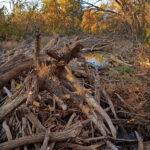
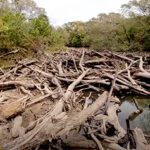

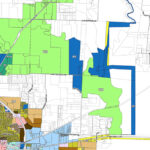

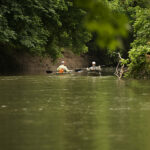

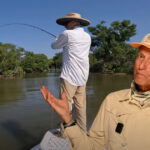


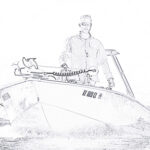
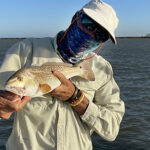


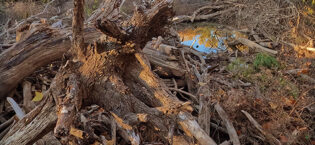
All I want to know is where these phantom fish are being dumped into Ray Roberts. My guess is the closest dumping point to Texoma. There certainly is nothing wrong with someone catching an illegal fish as long as they had no prior knowledge of the fish being there don’t you think?